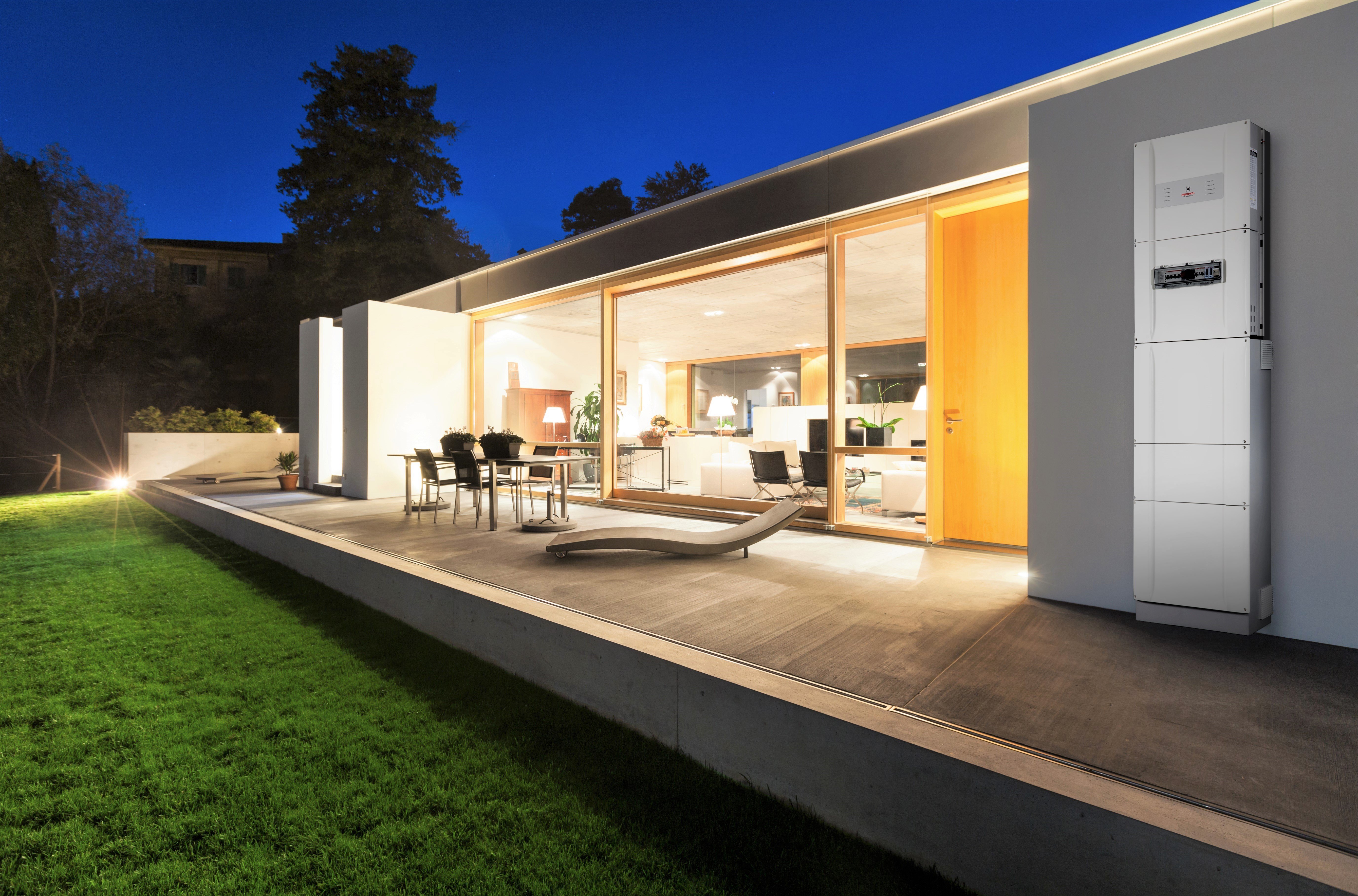Calculating what size solar battery is correct for your solar system depends on factors such as electricity consumption, roof size, roof position, solar panel quality, and budget.
Getting the right solar battery size is critical to maximising your savings. One that’s too big, and you’ll be paying for more equipment than you need; too small, and you’re still heavily reliant on the electrical grid.
A quality provider and installer such as Plico will conduct a no-obligation site visit to assess and recommend what the best solar + battery system would be for you (based on your current and projected energy use). But let’s delve into the kinds of questions and information that will determine what size solar battery you need.
How many solar panels and batteries do I need to run my house?
One of the most important factors in solar battery size is how many solar panels the system has. The more solar panels you have, the most solar energy you will create. The more energy you create, the larger your solar battery capacity will need to be.
Understanding Kilowatt (kW) and Kilowatt-Hour (kWh) ratings
The first step is understanding the units of measurement that outline the amount of energy you consume.
Kilowatts are a thousand watts, and kilowatt-hours describe the total consumption of kilowatts over an hour. Rather simple, right? So if your dishwasher required 1.5 kW of power, a basic equation looks something like this:
1.5 kW x 2 hours = 3 kWh of energy.
Your appliances should come with an energy rating, conveyed in kWh. You can find this either on an Energy Rating sticker or in the instruction collateral.
How much electricity do you consume?
Next, you should work out how much energy you consume. This is a relatively easy task as your electricity bills should display an ‘average daily use’ in kWh. By knowing this number, you can get an idea of how much power your solar + battery system will need to generate and how much battery storage will significantly minimise the amount of electricity you pull off the grid in peak consumption times, overcast weather and evenings. Your household’s energy consumption will fluctuate seasonally, so it’s best to calculate your average daily use across the course of a year.
So if your daily electricity usage is 18 kWh, and three or four panels produce 4 kWh of useable power, you’ll need around twenty panels to have enough energy to power your home. It’s important to remember that energy is lost in the transfer as it moves between your solar panels, inverter, appliances and battery – it’s better to have more generated power than you need. You also need to consider variables such as if you want to charge your electric car using solar energy.
How much roof space do you have?
The number of solar PV panels you need leads to our next question: how much roof space do you have to house them?
Solar panels vary in size, but the industry standard is around 1700 mm x 1000 mm (Plico’s panel dimensions are 1763 mm x 1040 mm x 35 mm). Different panels vary in their solar energy output (see point below). Knowing your roof size helps you calculate how much wattage output each panel will need to have and the maximum amount of solar energy generation possible with your roof space.
Roof positioning
When maximising your solar system's generation, it matters where your solar panels are installed. One of the factors that a Plico team member will assess in an obligation-free site visit is what direction and angle your panels should be facing to maximise direct sunlight.
In the southern hemisphere, the maximum amount of sun comes from the north, so your panels should be positioned accordingly. However, sometimes a house can’t have a solar PV system installed in a perfect north-facing direction. An industry professional will be able to assess your home and may be able to calculate alternatives that will still yield profitable results.
The impact of quality solar panels on your energy output
When it comes to solar panels, it’s not a level playing field – quality matters. Higher quality panels have greater efficiency in converting sunlight into electricity and will therefore produce more energy. A reputable provider is essential to ensuring that the money you spend on a solar + battery system is being put to the best use possible.
Calculate your budget
When thinking about what size solar battery you should invest in, it’s crucial to know your budget and any financial incentives available. If you’re installing an entire solar system, not just adding a battery, you need to ensure you have the funds for all components, which may limit the size of solar battery you can afford.
The price of solar batteries was consistently declining, but, unfortunately, demand for lithium has risen beyond supply, elevating prices. We’re experiencing a range of resource shortages worldwide at the moment, and it’s hard to know whether solar battery prices will trend down or continue to increase. Plico protects members from these fluctuations with its innovative pricing model – no big upfront costs and starting at a low weekly instalment. Every homeowner should have the opportunity to utilise renewable energy – it is a win-win that can save the owner money while being part of the movement toward a healthier environment.
The good news is that rebates for solar batteries will be available soon in WA and in Victoria there are interest-free loans available. And size matters - in WA the minimum battery size is 5 kWh to access the battery rebate.
For more information on solar battery prices, see How Much Are Solar Batteries?
If you're interested in assessing the cost of a holistic solar + battery system, read this blog.

How much money will a solar battery save me, and what is the payback period?
Use our calculator to get an idea of how much you could save with a Plico solar + battery system, or chat with a Plico team member to get an assessment more personalised to your circumstances.
If you’re paying for your solar battery upfront, your payback period is that initial expense divided by your savings. However, partnering with Plico is different – there aren’t any big upfront costs, just one low weekly instalment. Our plans run for ten years and include industry-leading PV panels and an inverter.
Why are so many Australians installing solar batteries?
The number of Australians purchasing and installing solar batteries is consistently rising. As our knowledge of renewable energy sources and their implementation continues to increase, the benefits of solar battery storage have become more well-known.
The primary reason people choose to get a solar battery is to decrease their reliance on the grid, with the hope of drastically cutting down their electricity bills. These monthly savings eventually accumulate to pay off your system's cost (or can comfortably cover your weekly fee if you’re partnering with Plico). Solar batteries also provide greater energy independence. If a blackout occurs in your area, you can use the energy stored in your battery to continue to run your house. Finally, among many other benefits, there’s the knowledge that you’re part of the solution: renewable energy is the future and our main hope in reducing fossil fuels and climate change.
Can I add a solar battery to my existing solar system?
Yes, you can! Plico has installed battery-only solutions for many Western Australians, always keeping to our policy of no big upfront costs and years of system monitoring and support.
To learn more, read our article Can I Add a Battery to my Solar System?. You can also view our range of battery-only systems.
Are solar batteries worth it?
Solar batteries have never been more worth it – we even wrote an article about it!
You need a battery to get the most out of your solar system. Without one, as soon as the sun disappears, you’re back paying for your electricity from the grid. In addition, solar feed-in tariffs (where your unused solar energy is pushed back to the grid in exchange for money for each kWh) continue to decline and are making it financially unbeneficial to push your excess energy to the grid. You’re also still at the mercy of unpredictable situations such as blackouts and scheduled power outages. The impacts of both of these issues can be mitigated with a solar battery.
Plico customer Sharlene’s story:
Sharlene and her family live on a large property with multiple sheds and many appliances running continuously. On top of this, Sharlene and her husband work from home and have an electric car that needs charging, so their electricity consumption is high. A solar battery seemed a great idea to reduce their electricity bills and utilise solar power in the evenings or on overcast days.
A Plico team member did a site assessment and chatted with Sharlene about the best solar battery size for her situation. The installation was easy and took about a day. Sharlene and her family have been saving on their bills ever since. They’ve even installed another Plico solar + battery system on their second property!
Solar + battery systems are the future
Renewable energy is our way forward to a better future, and slowly it’s becoming more influential and widespread (and will continue to grow). As we transition away from harmful resources such as coal, transferring to renewable energy such as solar puts you at the head of the pack – and you can save on your electrical bills as well!
It pays to ensure that your solar battery’s size is correct. Calculating factors such as your electricity use, roof space and positioning, budget, and researching particular PV pal outputs will help you assess what size solar battery is right for you. Alternatively, you can chat with a Plico team member and organise a no-obligation site visit, where we can provide you with details and a pathway that helps make sure your needs are met. So you can enjoy clean energy from the sun and save money in the process!
You can chat with one of the switched-on Plico team members on 1300 175 426 or by filling out the contact form.
Have a question about solar + battery?

